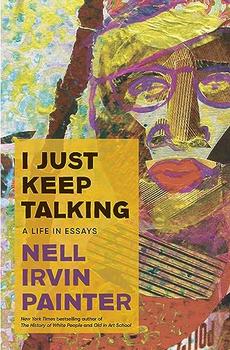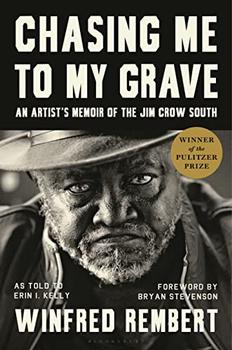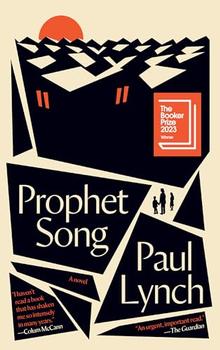Summary | Excerpt | Reviews | Beyond the book | Read-Alikes | Genres & Themes | Author Bio

A Life in Essays
by Nell Irvin PainterFrom the New York Times bestselling author of The History of White People and Old in Art School, a finalist for the NBCC Award, comes a comprehensive new collection of essays spanning art, politics, and the legacy of racism that shapes American history as we know it.
Throughout her prolific writing career, Nell Painter has published works on such luminaries as Sojourner Truth, Ralph Waldo Emerson, and Malcolm X. Her unique vantage on American history pushes the boundaries of personal narrative and academic authorship. Led by an unbridled curiosity for her subjects, Painter asks readers to reconsider ideas of race, politics, and identity. I Just Keep Talking assembles her writing for the first time into a single volume, displaying the breadth and depth of Painter's decades-long historical inquiry and the evolution of Black political thought—and includes a dazzling introduction and coda being published for the first time in this collection. From her mining of figures like Carrie Buck and Martin Delaney for their resonance today, to a deep dive into the history of exclusion through the work of Toni Morrison, to a discussion of the American political landscape after the 2016 election, Painter nimbly portrays the trials of a country frequently at war with itself.
Along with Painter's writing, this collection offers her original artwork, threaded throughout the book as counterpoint and emphasis. Her visual art shows a deft mind turning toward the tragedy and humor of her subjects; pulling from newspapers, personal records, and original sketches, Painter's artwork testifies to the dialectic of tremendous change and stasis that continues to shape American history.
These essays resist easy answers in favor of complexity, the inescapable sense of our country's potential thwarted by its failures. This collection will surely solidify Painter's place among the finest critics and writers of the last half century.
Introduction
EGO HISTOIRE
It's a good thing I didn't die young. Meaning it's a good thing for my reputation that I didn't die during the full-blown era of White-male default segregation, discrimination, and disappearance that wound down only yesterday. I would have disappeared from memory, just another forgotten Black woman scholar, invisible to history and to histography. So much in me-a dark-skinned Black woman, always very smart, born in Houston in the Houston Hospital for Negroes in 1942-was suited for disregard. No family drama. My parents were married; they stayed married in as good a heterosexual marriage as Americans born in 1917 and 1919 could have and that lasted seventy two years-until my mother's death. We were never poor, though never rich, and physical violence and addiction played no part in my family. My parents supported me emotionally and materially for more than forty years. There's not much there in my life to match what my country likes to recognize as a ...
From her unique lens as an artist and Princeton history professor emerita, Painter delivers intellectual think pieces that go beyond the easily digestible kind that become the subject of social media catfights. They reflect decades of scholarship. While the stunning introductory essay "Ego Histoire" is mostly autobiographical, a section of it retells a little-known Reconstruction-era murder. Interrogation of slavery is the subtext of Painter's "'Introduction' in Incidents in the Life of a Slave Girl, Written by Herself," about the memoir by Harriet Jacobs. "Elitism and Black Nationalism" tells the story of historical black nationalist-dreamer Martin R. Delany. After she retired from Princeton, Painter studied at the Rhode Island School of Design. Her book is filled with original artwork, like Beloveds He Saw Her Pink (2013), an ink graphite collage on paper inspired by Toni Morrison's spectacular novel Beloved...continued
Full Review
 (903 words)
(903 words)
(Reviewed by Valerie Morales).
 David W. Blight, Pulitzer Prize-winning author of Frederick Douglass: Prophet of Freedom
Nell Painter is one of the most important and versatile American historians of the last half century. This stunning array of essays…contains a potent autobiographical sizzle from introduction to the end…Prolific, provocative, and with a voice all her own, Painter reveals with admirable vulnerability a mind in transit through time.
David W. Blight, Pulitzer Prize-winning author of Frederick Douglass: Prophet of Freedom
Nell Painter is one of the most important and versatile American historians of the last half century. This stunning array of essays…contains a potent autobiographical sizzle from introduction to the end…Prolific, provocative, and with a voice all her own, Painter reveals with admirable vulnerability a mind in transit through time. Henry Louis Gates, Jr., Alphonse Fletcher University Professor, Harvard University
Nell Irvin Painter is one of the towering Black intellects of the last half century…[I Just Keep Talking] is more than an odyssey for the senses; it's a revelation that will inspire courage in anyone seeking to express their truth.
Henry Louis Gates, Jr., Alphonse Fletcher University Professor, Harvard University
Nell Irvin Painter is one of the towering Black intellects of the last half century…[I Just Keep Talking] is more than an odyssey for the senses; it's a revelation that will inspire courage in anyone seeking to express their truth. Honorée Fanonne Jeffers, author of The Love Songs of W.E.B. Du Bois
Give thanks that Nell Irvin Painter won't stop talking—and thinking and writing and bringing the truth. And give thanks for these sage words on art, on history, on Blackness, on America, on survival from this bone-strong woman who keeps on keeping on, in glorious insistence.
Honorée Fanonne Jeffers, author of The Love Songs of W.E.B. Du Bois
Give thanks that Nell Irvin Painter won't stop talking—and thinking and writing and bringing the truth. And give thanks for these sage words on art, on history, on Blackness, on America, on survival from this bone-strong woman who keeps on keeping on, in glorious insistence. It was May of 1851 when 54-year-old Sojourner Truth took the stage. Truth, who would become one of the most famous women of any race of the nineteenth century, spoke her personal testimony to the mostly white audience at the Women's Rights Convention in Akron, Ohio. She was the only speaker who had been enslaved and the room was captivated by her height, forthrightness, and passion.
It was May of 1851 when 54-year-old Sojourner Truth took the stage. Truth, who would become one of the most famous women of any race of the nineteenth century, spoke her personal testimony to the mostly white audience at the Women's Rights Convention in Akron, Ohio. She was the only speaker who had been enslaved and the room was captivated by her height, forthrightness, and passion.
In the audience that day was Marius Robinson, a secretary for the convention who was speedily taking notes. His account of Truth's speech was published in the abolitionist newspaper The Anti-Slavery Bugle three weeks later. One of the more powerful moments of the speech as recorded by Robinson was when she said, "I can't read, but I can hear. I have ...

If you liked I Just Keep Talking, try these:

by Ta-Nehisi Coates
Published 2024
The #1 New York Times bestselling author of Between the World and Me journeys to three resonant sites of conflict to explore how the stories we tell—and the ones we don't—shape our realities.

by Winfred Rembert
Published 2023
Winfred Rembert grew up in a family of Georgia field laborers and joined the Civil Rights Movement as a teenager. He was arrested after fleeing a demonstration, survived a near-lynching at the hands of law enforcement, and spent seven years on chain gangs.




If every country had to write a book about elephants...
Click Here to find out who said this, as well as discovering other famous literary quotes!